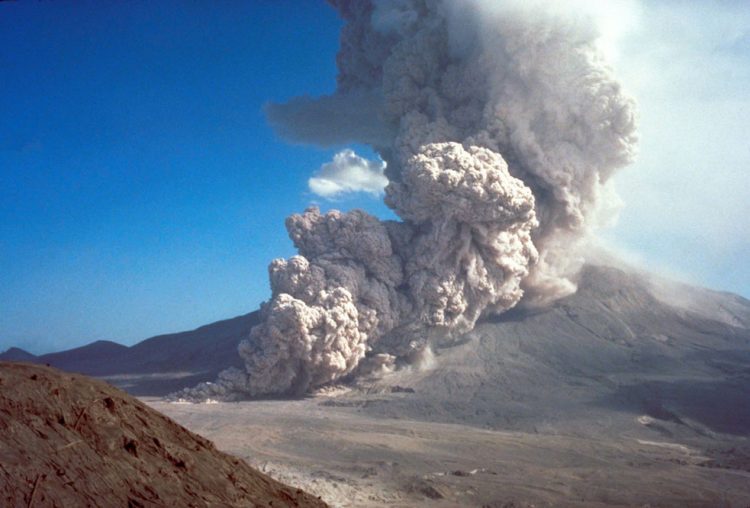Pyroclastic flows begin at La Soufriere

Pyroclastic flows, which are extremely fast “moving masses of destruction” containing hot gas, ash and rocks, and which kill and destroy everything in their path, even out into the sea, have begun to occur during the explosions from La Soufriere.
The lead scientist on the ground, volcanologist/geologist Professor Richard Robertson gave an update on the ongoing explosive phase of the eruption while on NBC radio this morning, April 11.
Robertson informed that there has been evidence of the flows, also called pyroclastic density currents, also revealing “There is one on a video that we got access to that happened on the Leeward side.”
The explosive phase of La Soufriere’s eruptions began on the morning of Friday, April 9, and have been persisting, accompanied by massive columns of ash.
While the ash has been wreaking its own havoc throughout the whole country, and throwing neighbouring islands into darkness; the pyroclastic flows are in a league on their own.
“…Instead of the material going up in the air it collapses on itself and goes down the mountain side and basically destroys everything in its path,” Robertson explained.
They usually travel down the valleys, but sometimes spread to the higher lands.
The appearance of the flows means “any communities there, not only would they have had to survive the heavy ash but now they have the potential of being destroyed by these flows that go down the mountainside.”
Robertson explained, “…these things (pyroclastic flows) are not like the ash that damage things by the weight, these flows really are moving masses of destruction, they just destroy everything in their path. If you have the strongest house in the world, they will just bulldoze it off the ground.”
“So it means that the amount of devastation you’re probably going to have, unfortunately, on the volcano itself, when this thing is stopped, we go back and see – it’s going to be significant. Not only because of the ash but because of these flows,” the scientist concluded.
Coupled with this, the explosive phase has not yet shown signs of letting up.
The pyroclastic flows are one of the most dangerous things that the volcano can do, and it is one of the things that killed people during the 1902 eruption.
Sometimes at 200 km per hour, faster than a person or vehicle, the flows move down the volcano. It is not able to predict which direction they will collapse down the mountain.
“…In front of it there’s a wave of finer ash called a surge. If you think of a hot, heavy wind. So you have a heavy part that’s in the main part and then you have a wind that’s stretching out to the front and to the side. And above it you have a rising column of ash just like in the plumes,” the Professor disclosed.
When it reaches the ocean, “…they would boil the sea and they would shoot across the sea as a foam of rapidly moving hot air and they will scald anything in their way.”
They will burn boats, and anyone in the area would have to try and move at least one mile out to sea.
“…there are stories from 1902 where people who were offshore the Walliabou river when the pyroclastic flows came down, they were actually offshore too close and so they jump into the sea and they tried to dive and the water above them was boiling,” Robertson relayed.
“We don’t have lava flows, the nice slow runny things that’s red and glowing, we don’t have those things here. What we have is fragments of rock and boulders and other things that shoot down the mountain very fast and destroys everything,” Robertson stated.
They look deceivingly harmless, “like a very fast moving cloud that moves down the mountainside.”









